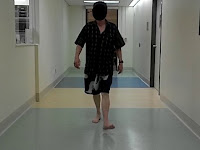Over the next 3 weeks the London Summer Olympics will be
showcasing thousands of athletes from all over the world. These athletes have
been training for years to hone their performance to meet summer game standards
and strive for a podium finish. There is
no doubt these athletes have injured themselves during their training while running,
walking, jumping, lifting, aiming, throwing, diving, vaulting, rowing and
swimming. Some athletes may even be competing at the London games with some
type of injury. The good news is that Olympic
athletes have access to many different health professionals to treat their
ailments to help them get ready for competition.
Some of the lower leg extremity problems that can hamper an
athlete included:
Hip pain
· Bursitis
· Leg length difference
Knee pain
·
Jumper’s knee (patellar tendinopathy)
·
Runner’s knee (Chondromalacia patella)
Leg pain
Ankle pain
Foot pain
·
Heel spur syndrome
Many of athletic injuries listed above can occur due to
an work related injury caused by repetitive stress, unstable foot posture and improper
footwear. Many occupational injuries get
worse because people will try to work through the injury and not seek help in a
timely fashion. Chiropodists and podiatrists are part of your health team to
get you back to work pain free. Chiropodists
and podiatrists can identify the mechanical instability in your foot or lower
leg that may be causing your injury. We
will examine your feet, lower legs, walking pattern, footwear and any systemic
medical problems that may contributing your injury such as diabetes.
Custom
foot orthotics may be part of the solution to get you pain free and back to
work
I wish the Canadian Olympic team members the best of luck in London
in their pursuit of a podium finish.


